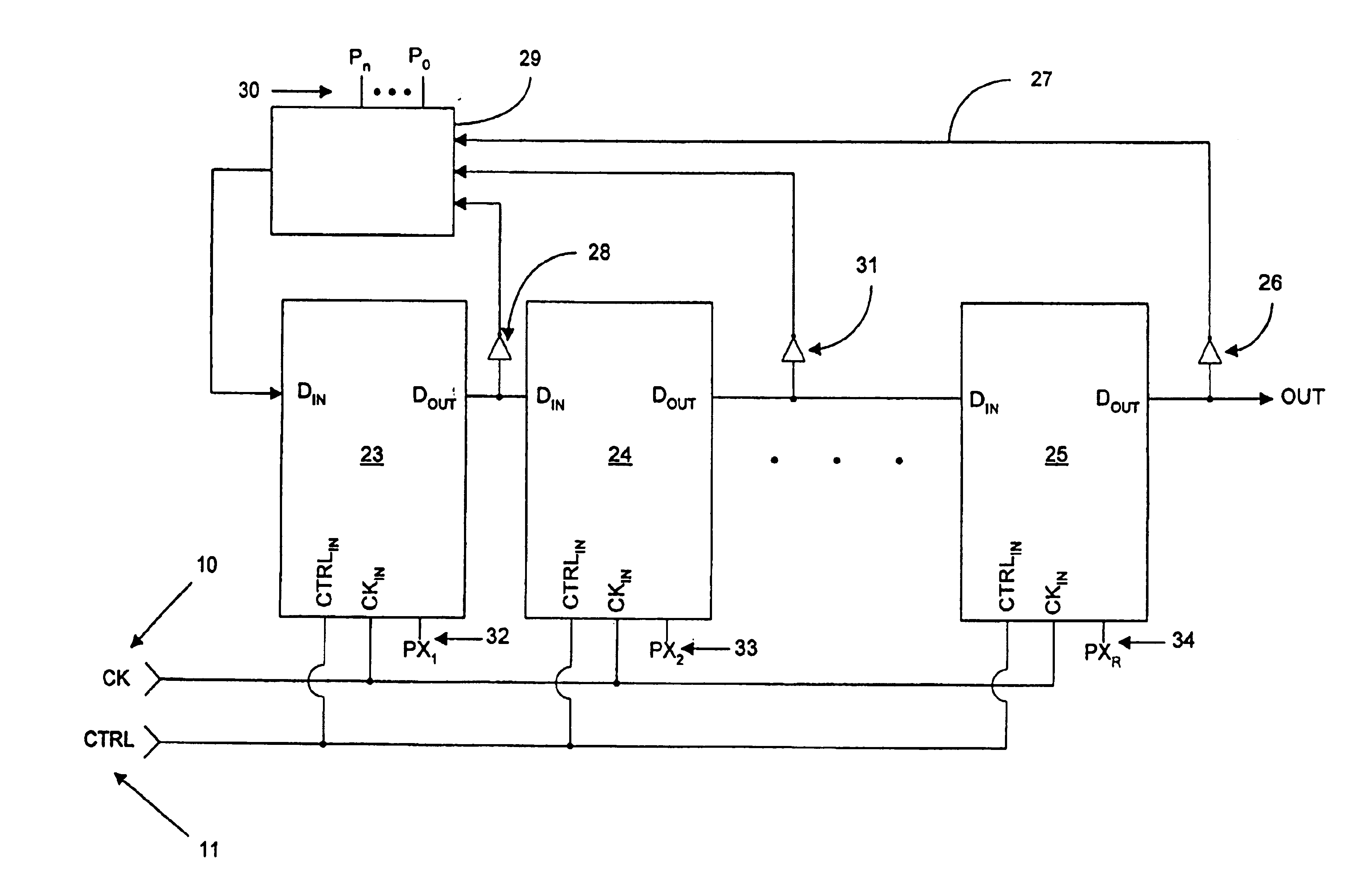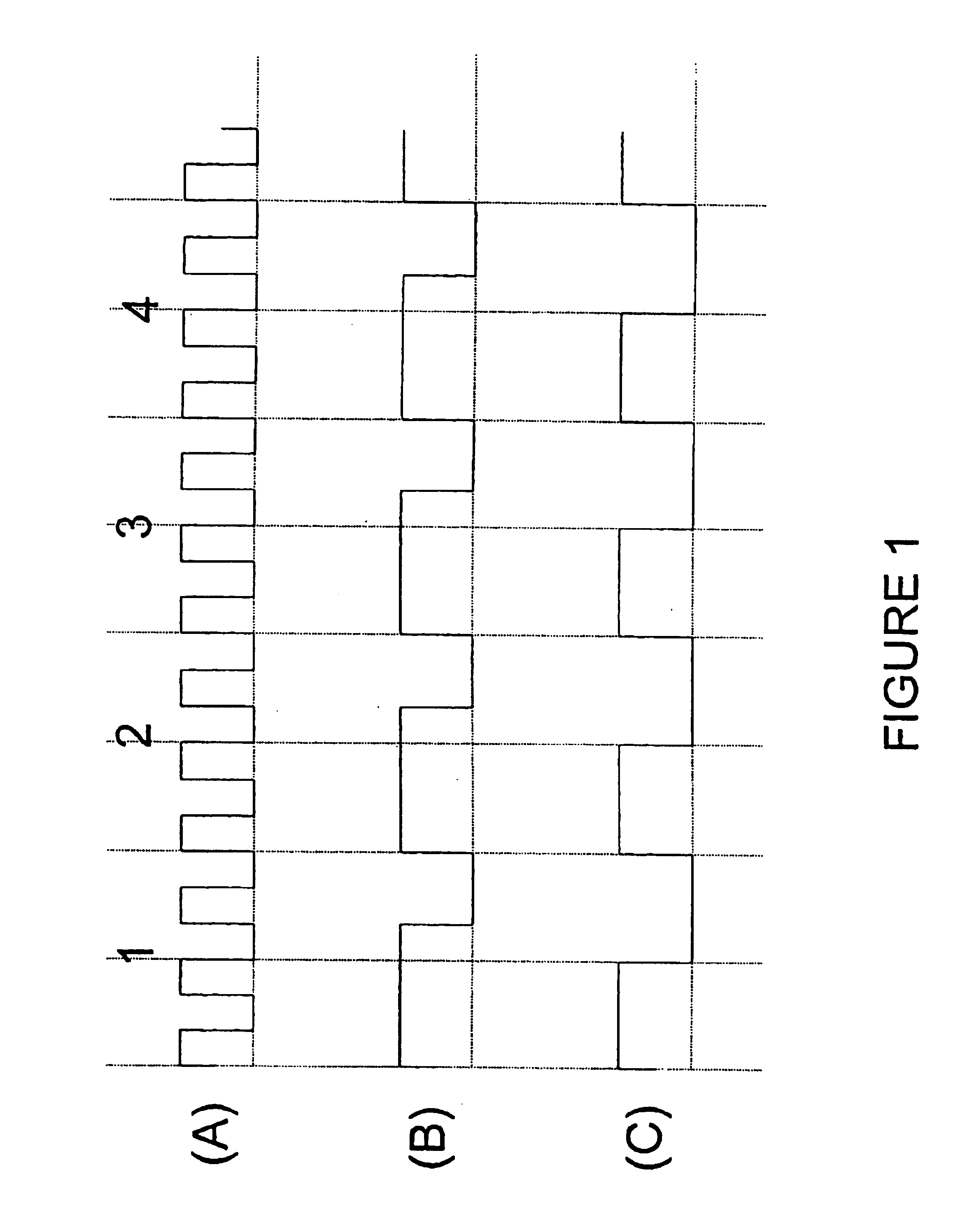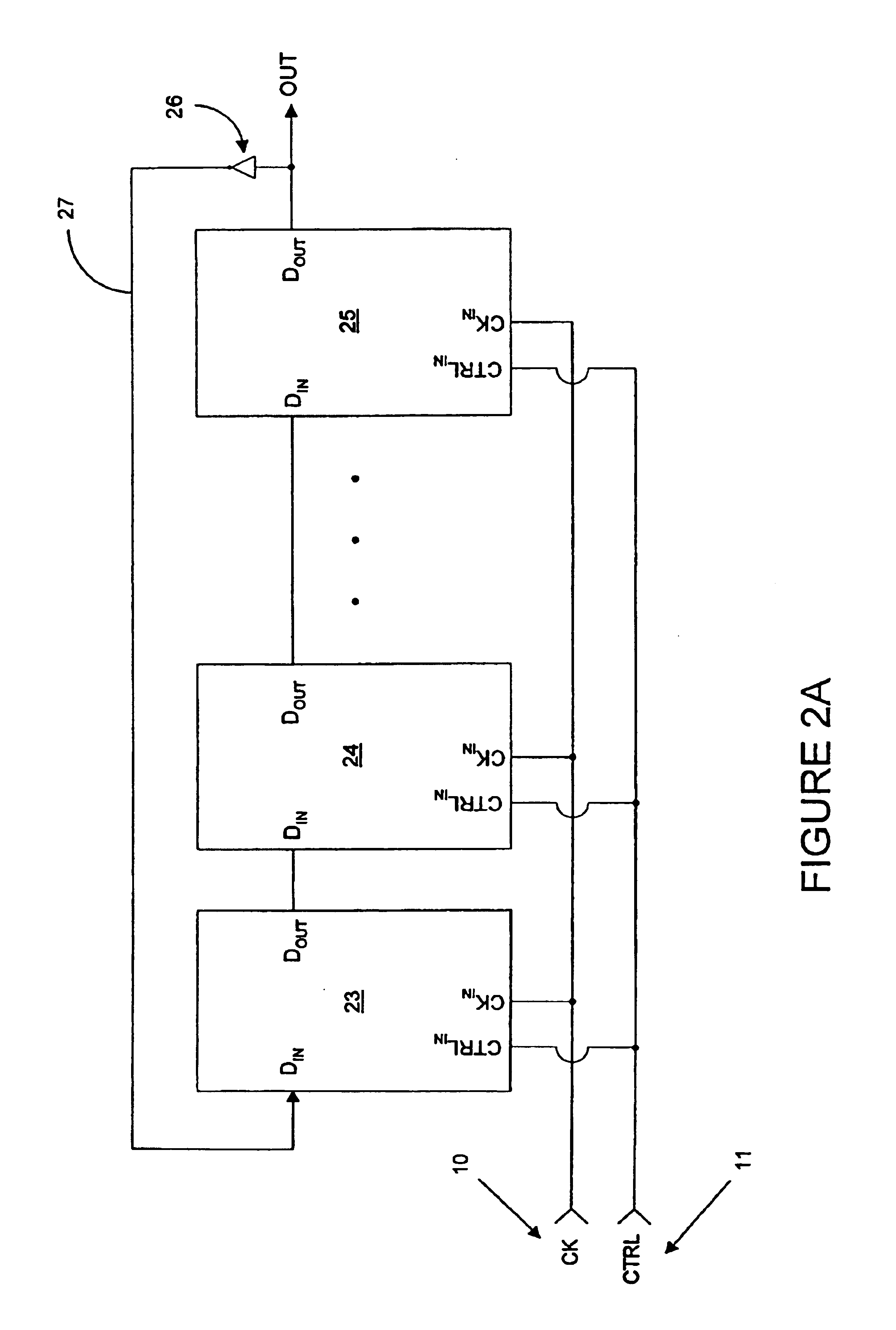Programmable frequency divider
a frequency divider and programming technology, applied in the field of frequency dividers, can solve the problems that even harmonic introduction defeats the purpose of using purely differential mode signals, and conventional approaches employing counters or cascaded flip-flops may not be acceptable in every situation
- Summary
- Abstract
- Description
- Claims
- Application Information
AI Technical Summary
Benefits of technology
Problems solved by technology
Method used
Image
Examples
first embodiment
[0031]FIG. 2A illustrates the subject invention. According to this embodiment, a programmable frequency divider is provided comprising a plurality of edge triggered storage elements 23, 24, 25 arranged in sequence, each of the elements having a data input, DIN, a data output, DOUT, and a clock input, CKIN, wherein a clock signal 10 is coupled to the clock inputs of each of the storage elements, the data input of the first element in the sequence is coupled to the inverse 27 of the data output of the last element in the sequence, and the data input of each of the other elements in the sequence is coupled to the data output of the preceding element in the sequence. Each storage element is configured to trigger, i.e., change state, on either a positive or negative edge of the clock signal depending on the state of a control signal 11 indicative of a characteristic of the desired division ratio and also depending on the state of the data output DOUT of the storage element. An inverter 2...
second embodiment
[0037]the subject invention is illustrated in FIG. 2B in which, compared to FIG. 2A, like elements are referenced with like identifying numerals. In this embodiment, the division ratio N is a programmable variable, and the number F of storage elements which contributes to the frequency division function is determined responsive to the desired division ratio. This number may be less than the number of storage elements physically present in the sequence.
[0038]The inverse of the data outputs of each of the storage elements is provided as an input to circuit 29, the output of which is coupled to the data input of the first storage element in the sequence, storage element 23. The circuit 29 selects one of these inputs responsive to the state of control inputs P0-Pn, identified with numeral 30, and outputs the same to the data input of storage element 23. The inverse of the data outputs of storage elements 23, 24 is provided by inverters 28 and 31. (Again, in a differential mode circuit, ...
third embodiment
[0040]the subject invention is illustrated in FIG. 2C in which, compared to FIG. 2B, like elements are referenced with like identifying numerals. In this third embodiment, a power saving feature is provided in which unused storage elements in the sequence are placed in a power saving mode. Thus, in FIG. 2C, each of the storage elements 23, 24, and 25 are configured to turn off responsive to assertion of a control input PX1, PX2, PXR, respectively. These control inputs are identified in FIG. 2C with the identifying numerals 32, 33, and 34. Using these signals, the storage elements other than the F storage elements needed to participate in the frequency division operation are placed in a power saving mode.
[0041]In one implementation, each of the control and clock signal inputs to a storage element are configured as current mode signals in which a logical ‘1’ is represented through a current flow in a direction towards ground, and a logical ‘0’ is represented by the lack of such a curr...
PUM
 Login to View More
Login to View More Abstract
Description
Claims
Application Information
 Login to View More
Login to View More - R&D
- Intellectual Property
- Life Sciences
- Materials
- Tech Scout
- Unparalleled Data Quality
- Higher Quality Content
- 60% Fewer Hallucinations
Browse by: Latest US Patents, China's latest patents, Technical Efficacy Thesaurus, Application Domain, Technology Topic, Popular Technical Reports.
© 2025 PatSnap. All rights reserved.Legal|Privacy policy|Modern Slavery Act Transparency Statement|Sitemap|About US| Contact US: help@patsnap.com



